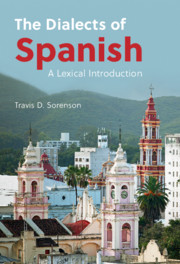Book contents
- Frontmatter
- Dedication
- Contents
- List of maps
- List of tables
- Preface
- Introduction
- 1 Food-related Items
- 2 Clothing and Accessory Items
- 3 Motor Vehicle-Related Items
- 4 Miscellaneous Items
- 5 Discussion and Conclusions
- Appendix: Maps
- Glossary of Technical Terms Used in the Text
- References
- Word Index (English-Spanish)
- Word Index (Spanish-English)
5 - Discussion and Conclusions
Published online by Cambridge University Press: 09 April 2021
- Frontmatter
- Dedication
- Contents
- List of maps
- List of tables
- Preface
- Introduction
- 1 Food-related Items
- 2 Clothing and Accessory Items
- 3 Motor Vehicle-Related Items
- 4 Miscellaneous Items
- 5 Discussion and Conclusions
- Appendix: Maps
- Glossary of Technical Terms Used in the Text
- References
- Word Index (English-Spanish)
- Word Index (Spanish-English)
Summary
This chapter presents arguments about why, for the items addressed in the book, Spanish employs a considerably greater number of lexemes. It also explores the significance of the number of countries in which a language is spoken, as well as the regions in which these nations are located. Furthermore, it presents a novel theory regarding the evident influence of Greco-Roman rhetorical tradition on the types of lexical variety in Spanish demonstrated in the book. Finally, also bringing the previous four chapters together is a table containing seventy of the more than 500 words analyzed in said chapters, a representative sampling of the myriad etymological routes by which they entered the Spanish lexicon.
- Type
- Chapter
- Information
- The Dialects of SpanishA Lexical Introduction, pp. 251 - 272Publisher: Cambridge University PressPrint publication year: 2021

